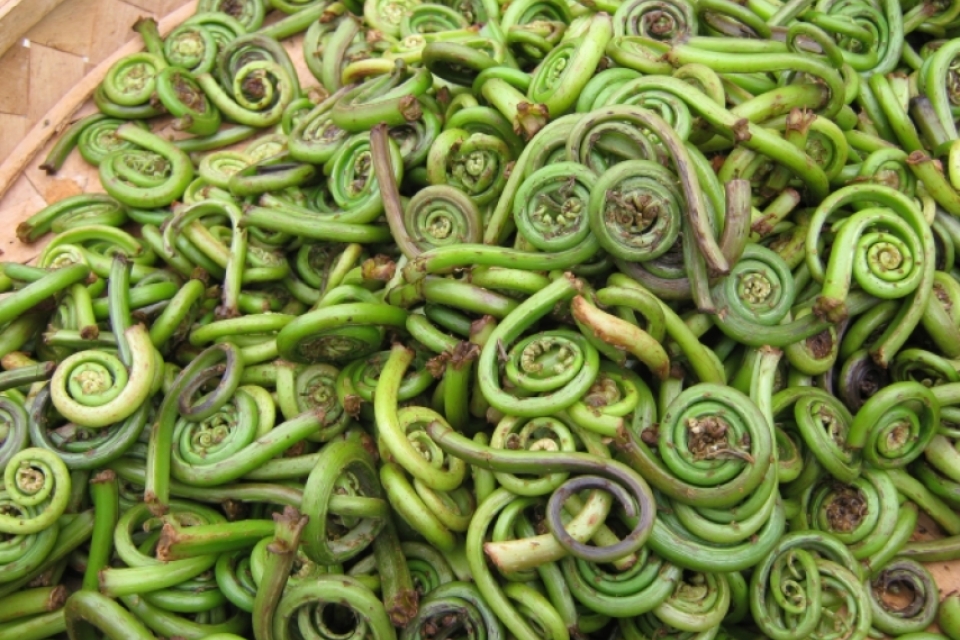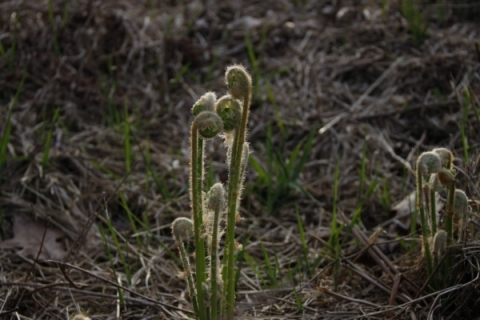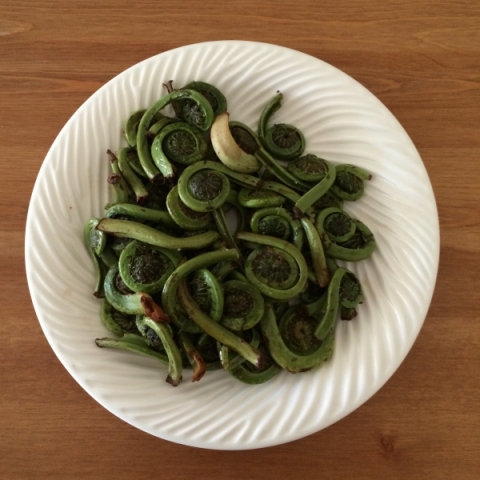For the Love of Fiddleheads
Springtime in Vermont is a long-anticipated season. After long months in the bitter cold and the wintry snow, it’s a happy sight to find the colors of nature bloom out from underneath. My favorite sight? The bright green springy coils of fiddleheads! Move over root veggie stew, it’s time to add some springtime flavors to the menu. My favorite spring recipes feature the addition of this ingredient and the taste always reminds me of the warm weather to come. Fiddleheads are a tasty vegetable, they’re easy to use, and they pack a nutritional punch to boot.
Fiddleheads are the curly tips of many different types of ferns and can be found all over the world. They actually get their name from their unique look—the curled top looks like the handle of a fiddle! In Vermont, most often we see fiddleheads from a plant called the Ostrich fern, and it does best in rich, moist soils. The tops are harvested very early, when the ferns poke out of the ground by just a few inches. When harvested properly, the plant is not harmed at all. They’re fleeting little plants, with a short season between April and May, so enjoy them when you can. When shopping for this ingredient, look for fiddleheads with tight curls and a vibrant green color. Many folks recommend freezing or canning fiddleheads to enjoy in other months.
Wondering what these peculiar-looking veggies taste like? I describe the flavor as earthy and a little bit grassy, with a texture similar to asparagus. Other taste-testers describe flavors of mushroom, artichoke, and spinach. They can be used in many different kinds of dishes—chopped up in a spread, featured in a vegetable medley, or even topped on a pizza! It’s important to note, though, that fiddleheads are safest to eat when they are cooked. Eating them raw can make you sick, but luckily there are many easy (and tasty) ways to cook them. In most recipes, the fiddleheads can be steamed or boiled for about 10-15 minutes.
Just one serving of fiddleheads also adds a lot of nutrients to any menu. Fiddleheads are high in Vitamin A, Vitamin C, and B Vitamins (important for energy to power through the day). With a good amount of protein, they are great vegetables for vegetarians and omnivores alike. Fiddleheads are also high in some of the minerals we don’t hear as much about, but are just as important. One serving will get you a good source of copper, manganese, magnesium, iron, and zinc.
Check out this awesome recipe to try this season:
Fiddlehead Garlic Scape Pesto
1 cup fiddleheads
1/2 cup garlic scapes
1/2 cup basil
1/4 cup pine nuts
2 cloves garlic
1/2 cup olive oil
1/4 cup parmesan cheese
Clean the fiddleheads of any brown papery covering. Boil them for 15 minutes. Strain the fiddleheads and put them in a food processor. Add the garlic scapes and basil and blend them together. Then add the pine nuts, garlic, olive oil, and parmesan, pulsing the food processor until a paste forms. (To make the recipe vegan, you can substitute crushed walnuts or cashews for the cheese.) Add to pasta or use fresh on toasted pita. This can be stored in an airtight container in the refrigerator for about 5-7 days.


